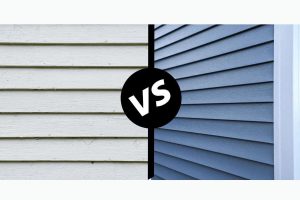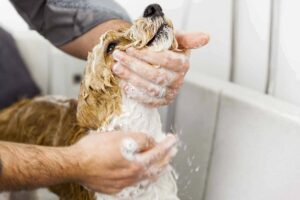Introduction
Creolin is a potent disinfectant and deodorizer that can effectively eliminate foul odors. However, it also has a distinct and sometimes overpowering smell of its own. If you’ve recently used creolin and are now wondering how to get rid of that lingering odor, you’re in the right place. In this article, we’ll explore various methods and techniques to help you eliminate the creolin smell from your space.
Understanding Creolin Smell
What Is Creolin?
Creolin is a dark brown, oily liquid derived from coal tar. It’s commonly used as a disinfectant and deodorizer due to its strong antibacterial properties. However, its smell can be quite pungent and persistent.
Why Does Creolin Smell So Strong?
The powerful odor of creolin is a result of its chemical composition. It contains phenolic compounds and cresols, which contribute to its distinctive smell. While it effectively neutralizes other odors, it can create an unpleasant scent itself.
Removing Creolin Smell
Creolin, while effective at disinfecting and deodorizing, can leave a strong and sometimes unpleasant odor behind. To restore a fresh and clean scent to your surroundings, it’s essential to employ effective odor-removing techniques. Here are some additional strategies for getting rid of the creolin smell:
Ventilation Is Key
One of the simplest and most immediate ways to combat the creolin smell is through proper ventilation:
- Open windows and doors: Allowing fresh air to flow through your space can quickly dilute and disperse the creolin odor. Cross-ventilation, where you open windows on opposite sides of a room, can be particularly effective.
- Use fans: Ceiling fans, floor fans, or box fans can help circulate air and accelerate the dissipation of the odor. Position them strategically to enhance airflow.
Activated Charcoal
Activated charcoal is a natural odor absorber that can work wonders in eliminating creolin smell:
- Place charcoal bowls: Position bowls filled with activated charcoal in the areas where the creolin was used. The charcoal will absorb and neutralize the odor over time.
- Replace regularly: To maintain its effectiveness, replace the activated charcoal in the bowls every few days or as needed.
Baking Soda
Baking soda is another excellent and budget-friendly option for absorbing and neutralizing odors:
- Sprinkle liberally: Generously sprinkle baking soda on carpets, upholstery, or other surfaces that have been treated with creolin. Leave it to sit for several hours or overnight.
- Vacuum thoroughly: After the baking soda has had time to work, thoroughly vacuum the treated areas to remove the baking soda and any absorbed odors.
Vinegar Solution
White vinegar is a versatile and natural deodorizer that can help counteract the creolin smell:
- Mix a solution: Combine equal parts water and white vinegar in a spray bottle.
- Mist affected areas: Spray the vinegar solution onto the surfaces where creolin was used. Ensure you perform a patch test on a small, inconspicuous area first to confirm that it won’t damage the surface.
- Allow to dry: Let the vinegar solution air dry, and as it evaporates, it will take the creolin odor with it.
Deep Cleaning
When the creolin smell has permeated fabrics, carpets, or other porous surfaces, a more thorough approach to cleaning may be necessary. Deep cleaning can help eliminate the odor at its source, leaving your space smelling fresh and clean.
Steam Cleaning
One effective method for tackling creolin odor in carpets, upholstery, and curtains is steam cleaning. Steam cleaning uses hot water vapor to penetrate deep into the fibers and break down the residues left by creolin. Here’s how you can do it:
- Rent or purchase a steam cleaner: You can find steam cleaners for rent at many home improvement stores, or you can invest in one for long-term use.
- Prepare the area: Remove any furniture or obstacles from the area to be cleaned. Vacuum the area thoroughly to remove loose dirt and debris.
- Follow the manufacturer’s instructions: Read the instructions provided with your steam cleaner to ensure you use it correctly.
- Fill the water tank: Fill the steam cleaner’s water tank with clean water as instructed.
- Begin cleaning: Start steam cleaning the affected area, following the machine’s guidelines. Make sure to go slowly to allow the steam to penetrate deep into the material.
- Repeat if necessary: For stubborn creolin odors, you may need to repeat the steam cleaning process.
Washing Fabrics
For clothing, linens, and other washable items that have been exposed to creolin, a washing machine can help eliminate the smell effectively. Here’s what you can do:
- Separate affected items: Sort out the items that have been exposed to creolin and set them aside.
- Pre-treat stains: If there are visible creolin stains, pre-treat them with a stain remover suitable for the fabric type.
- Use vinegar: Add a cup of white vinegar to the washing machine during the rinse cycle. Vinegar can help neutralize the creolin odor.
- Wash as usual: Wash the items in your washing machine according to the care instructions on the labels.
- Dry in fresh air: After washing, allow the items to air dry in a well-ventilated area. Avoid using a dryer until you’re sure the creolin smell is completely gone.
Deep cleaning methods like steam cleaning and washing fabrics can be highly effective in eliminating creolin odor from various surfaces. However, always check the manufacturer’s instructions for the cleaning equipment and follow the recommended procedures to ensure safe and efficient results.
Additional Tips
Odor-Absorbing Products
Consider using commercial odor-absorbing products or air fresheners designed to combat strong odors. These can provide temporary relief while the creolin smell dissipates.
Time and Patience
In most cases, the creolin smell will gradually fade with time. Be patient and continue with the odor-removing methods until the smell is gone completely.
Masking the Odor
Essential Oils
As mentioned in the FAQs, essential oils can be a great way to mask the creolin smell with more pleasant scents. You can use a diffuser to disperse essential oils throughout your space. Scents like lavender, eucalyptus, or citrus can help create a more inviting atmosphere while diminishing the creolin odor.
Odor-Neutralizing Sprays
Many commercial odor-neutralizing sprays are available on the market. These sprays are designed to eliminate bad odors and leave a fresh scent behind. Look for one specifically formulated to combat strong, stubborn smells like creolin.
Prevention
Use Alternatives
If the strong smell of creolin is a concern for you, consider using alternative cleaning and deodorizing products. There are numerous eco-friendly and fragrance-free options available that can effectively disinfect and deodorize without the overpowering scent.
Proper Dilution
When using creolin, make sure to follow the manufacturer’s recommended dilution instructions. Using too much can result in a stronger smell. Proper dilution can help minimize the odor while still maintaining its effectiveness.
Conclusion
Getting rid of creolin smell can be challenging, but with the right techniques and some patience, you can successfully eliminate it from your space. Remember to ventilate the area, use natural odor absorbers, and consider deep cleaning methods. Soon, your space will be fresh and free of that lingering creolin scent.
FAQs
Creolin should be used with caution around pets and children. Ensure proper ventilation and keep them away from freshly treated areas.
Diluting creolin may reduce its effectiveness as a disinfectant. It’s best to use it as directed and focus on eliminating the odor afterward.
The time it takes for the creolin smell to dissipate can vary depending on factors like ventilation and the amount used. It typically takes a few days to a week.
Always follow the manufacturer’s instructions when using creolin. Wear protective gear, such as gloves and a mask, and avoid contact with skin and eyes.
Yes, you can use essential oils like lavender or citrus to help mask the creolin smell. Mix a few drops with water in a spray bottle and mist the affected area for a more pleasant scent.



